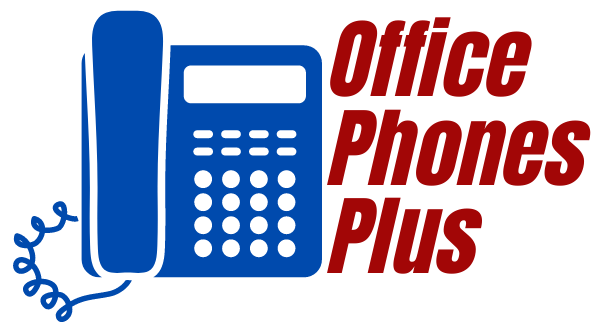How a $100 Internet Bill Became $1,000 Overnight
Let’s look at a story about a businessowner who was surprised to see what they expected to be a $100 internet bill turn into $1,000 unexpectedly and immediately. For the sake of this story, we’ll call the businessowner Sarah. When Sarah and her business moved to a quiet commercial district in a less populated area, she knew the change would come with some trade-offs—for example, she might see less traffic in and out of her business location, but her customers would likely be more loyal and she’d develop stronger relationships with them. These were the risks and rewards she was prepared for.
What was she not prepared for? Sarah was told by the local provider that she could sign up for a “high-speed rural internet plan” for just $100 a month. It sounded reasonable. It sounded fair.
Then came the bill: $1,042.78.
No warning. No explanation beyond “usage overages” and “equipment fees.” Just one month into their new plan, Sarah’s internet bill had ballooned to ten times what she expected. And as she found out, she wasn’t alone.
The Real Price of Connectivity in Remote Areas
Stories like Sarah’s are becoming more common in rural and semi-rural areas where internet providers still treat high-speed access as a luxury rather than a necessity. It’s not uncommon to be promised one price and receive another—often with little recourse. What starts as a $100/month estimate can become a much higher cost once data caps, installation fees, and fine-print service terms come into play.
So, how does this happen?
“Best Effort” Isn’t Always Good Enough
Many rural internet plans are marketed under terms like “best effort service,” which may sound reassuring, but it’s essentially a disclaimer. It means the provider isn’t guaranteeing any specific performance—speed, uptime, or even availability. In practice, “best effort” can mean drastically reduced speeds during peak hours, frequent outages, or throttling once you hit a certain threshold.
Worse yet, some providers still rely on legacy infrastructure—aging copper lines, outdated fixed wireless systems, or capped satellite links. That $100 plan might technically exist, but in reality, it’s only a base rate. Anything beyond the most conservative usage can cost you.
The Infrastructure Catch: Remote Access Isn’t Cheap
One of the biggest reasons for the price hike is the cost of building and maintaining internet infrastructure in remote areas. Unlike in cities where thousands of properties, both residential and commercial, can be served by a single fiber line, rural properties often require custom installations. Trenching fiber, erecting signal towers, or deploying satellite gear doesn’t come cheap—and the customer often shoulders the burden.
Installation might come with a “standard” fee upfront, but what’s considered “standard” can be misleading. If your home is farther off the main road, or you need additional equipment, those expenses can spiral quickly. Some customers are shocked to see installation charges of several hundred dollars on their first bill, even if those costs were glossed over during the signup process.
On top of that, if you’re relying on satellite internet, high latency and strict data caps are the norm. Many satellite plans offer around 30GB of high-speed data before speeds are throttled. Streaming, video conferencing, or even a few automatic software updates can put you over the limit—triggering costly overage fees.
The Fine Print Problem
Then there’s the issue of contracts. Internet service agreements are notorious for being long, confusing, and full of hidden clauses. Many customers don’t read them thoroughly—and who can blame them? They’re often buried in legal jargon and formatted to discourage deep reading.
But within those pages can be some nasty surprises:
- Introductory pricing that jumps after 1–3 months
- Data overage penalties (sometimes up to $10 per additional GB)
- Early termination fees
- Equipment rental costs not included in the advertised price
- “Non-standard installation” fees that vary widely
These contract terms are designed to protect the provider, not the customer. Once you sign, you’re often locked in for 12 to 24 months, and getting out early can mean paying hefty penalties.
What You Can Do
Before signing up for any internet plan—especially in a rural area—there are steps you can take to protect yourself from surprises like Sarah’s $1,000 bill:
- Ask specific questions. Don’t just accept “$100/month.” Ask what’s included, what’s not, and what average bills look like with similar usage.
- Request a copy of the contract upfront. Read it carefully, or have someone knowledgeable review it with you.
- Ask about data caps and overage fees. These are often the main cause of price spikes.
- Get installation quotes in writing. And ask if your property qualifies for standard installation.
- Talk to your fellow businessowners in your area. Chances are they’ve experienced the same providers and can offer insights into real-world pricing and service quality.
Connectivity Shouldn’t Be a Gamble
Reliable internet isn’t a luxury—it’s a necessity in today’s world. But in many parts of the country, particularly less urban areas, some businessowners are finding themselves treated as second-tier customers, paying premium prices for subpar service. Until more transparent pricing and broader infrastructure improvements arrive, it’s up to consumers to read the fine print, ask the tough questions, and advocate for better broadband access.
Because no one should have to choose between staying connected and staying financially afloat.
If you’re moving your business to a quieter area where internet access might look different than it does in an urban or suburban area, you need guidance. Our team at Office Phones Plus can help you! Give us a call at 410-834-4900.

